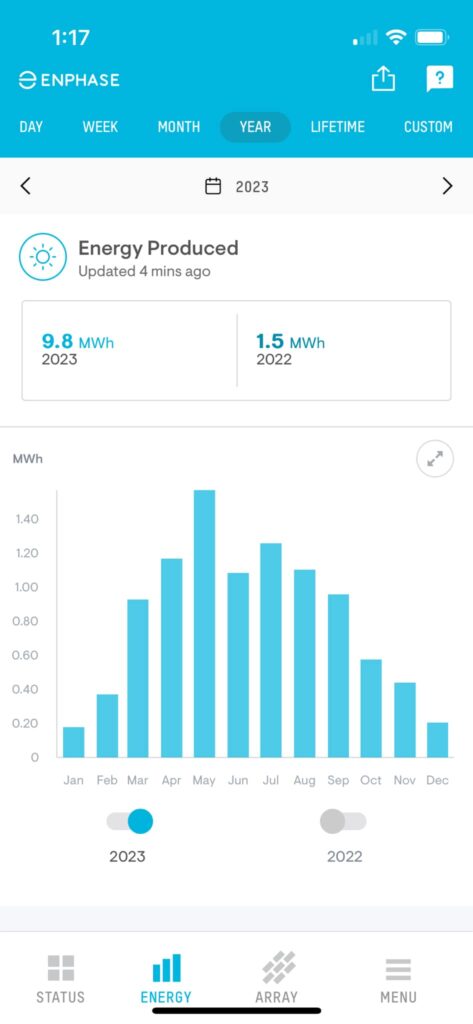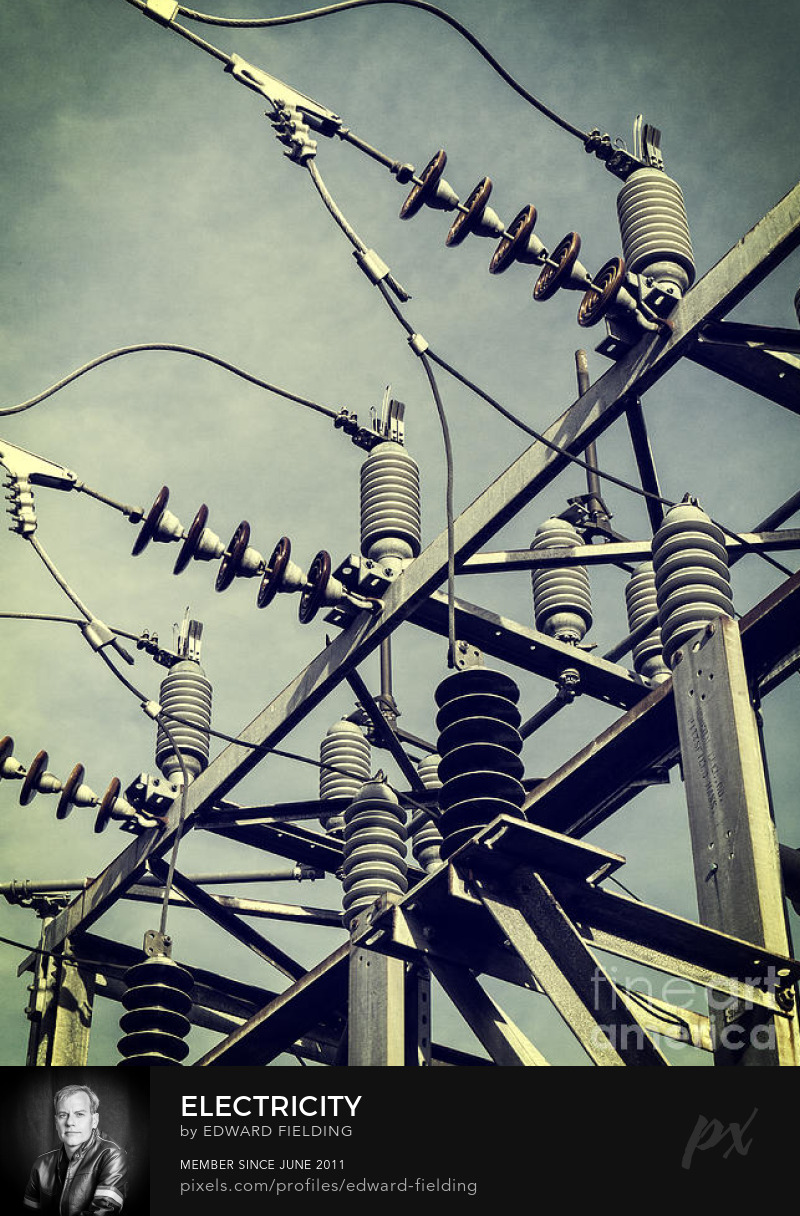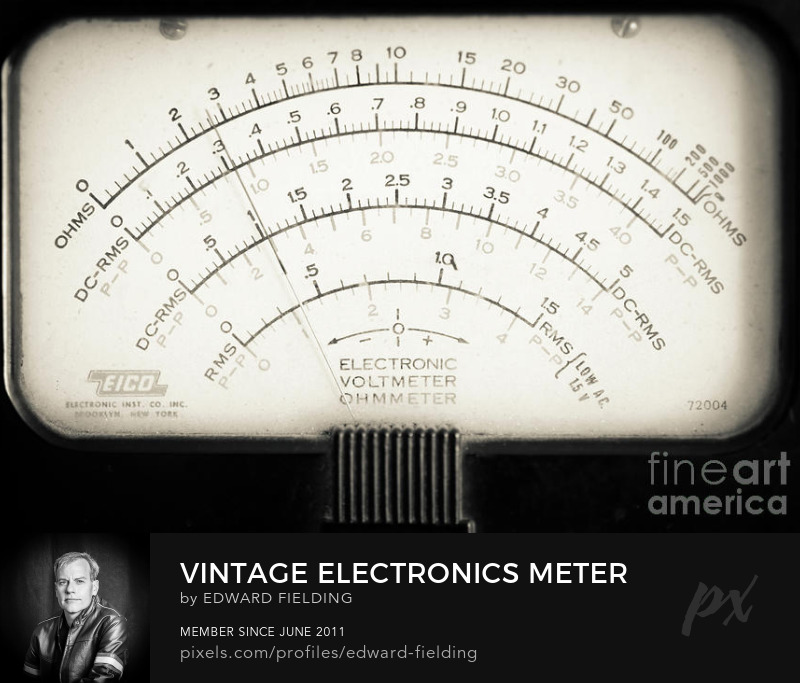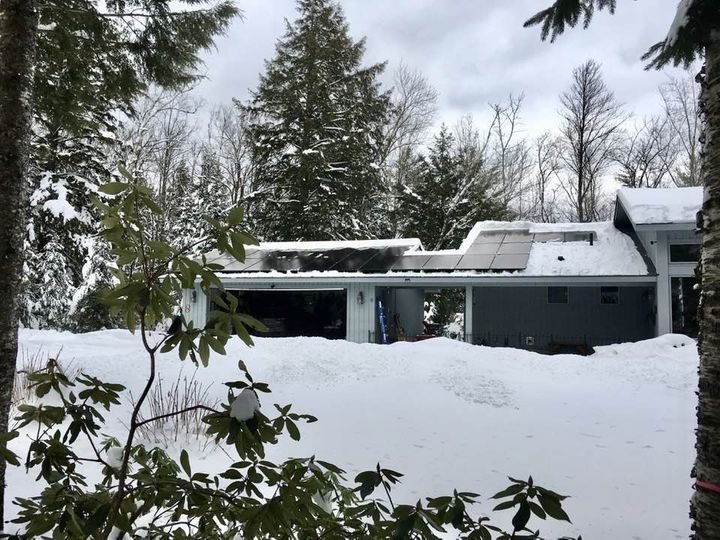Last year was our first full year with our roof top solar array. We live in ski country in New Hampshire, not a place one typically thinks of solar working but prices of solar panels have fallen so much over the past and electricity prices here in the Northeast are some of the highest in the nation due to reliance on natural gas.
Currently ISO New England primarily gets it’s electricity from natural gas with some hydro and nuclear power. Some major wind projects are expected to come online later this year but primarily we are still relying on fossil fuels for electricity. You can see the mix broken down here in real time – https://www.gridstatus.io/live/isone
Now if you really want to know where your power comes from, why not produce it yourself by harvesting photons from the sun? And we aren’t talking about some kind of off the grid pioneer living. We are talking about a grid-tied solar array.
Getting Started with Photon Harvesting
A grid tied solar array with net metering in New Hampshire and other states allows one to overproduce in the sunny months and build up energy credits for the winter months.
Batteries are a luxury, gives one some peace of mind that power won’t be interrupted during those annoying 15 minute outages or even the ones that last a few hours. Also battery storage allows the panels to work during an outage.
Granite State Solar installed our solar array in September of 2022. It was a six month process filling out all of the permits and getting solar approved via our town and HOA. But most of the hold up was a labor shortage in New Hampshire – too much demand for solar, not enough workers to install.
Less Than Ideal Roof?
Now our house isn’t ideal in terms of angle or orientation. And we did have a lot of trees around the house. We could see several that were casting shaddows on our array during peak times so we had eight trees removed which are now chopped and split bio-mass (firewood).
We have 27 panels 400 watt panels (one is kind of weak as the roof shadow hits it part of the day about half the year).
Our out of pocket costs were $31K – (minus 30% tax credit) and for 1 Powerwall 2 – $15K (minus 30% tax credit).
We paid cash and expect to see a payback on our investment in approximately 12 years. The panels are warrentee for 25 years and will produce beyond that. Besides who knows what new technology will exist in 25 years. I might not be around by the next home owner can easily swap out the panels for ones that produce 2x-5x times as much.

There is some room for improvement from 2023 numbers. First, we had some trees cut down in Feburary 2023 so this year should be better. And last year we had a very rainy June and October, so perhaps those months will be better this year. Last summer there was also a lot of smoke around from the Canada wildfires – hopefully this summer won’t be a repeat.
What about the Winter Months?
Mid-Nov to Mid-Feb we don’t produce enough power to cover usage so we use the energy credits built up all summer. Those run out in December so we end up paying for a bit of Dec, Jan and a bit of Feb – all depending on the weather and snow amounts.
What was your electric bill after having rooftop solar installed?
After a year with solar, our electric bill for the entire year was approximately $450 (subtotal). This include running the heat pump (AC/heat in the master bedroom), electric (heat pump) dryer and hot water (heat pump). If we didn’t have the hot tub on the deck, the utility would owe us money.
After selling SRECs our total final electric bill for 2023 was around $250 for the year.
In SREC state markets, the Renewable Portfolio Standard (RPS) requires electricity suppliers to secure a portion of their electricity from solar generators. The SREC program provides a means for Solar Renewable Energy Certificates (SRECs) to be created for every megawatt-hour of solar electricity created.
In CT, MA, ME, NH, RI, and VT we can sell SRECs in marketplace via Knollwood Energy for $27 per SREC.
- 1 SREC = 1 MWh of solar electricity
- A 10 kW facility generates around 12 SRECs annually
- SRECs are sold separately from the electricity
We created 9 SRECs from our solar production in 2023 and received $243. Keep in mind that is is on top of using our solar electricity to power our home and selling our excess electricity to the utility.
Had we created more electricity than we used for the year, in March the utility would have to cut us a check. But the utilitiy typically only approves systems that match previous usage and we’ve added a lot of electricity using appliances.
Is the backup battery worth it?
My wife insisted on getting a backup battery for our system. They are expensive but add piece of mind. A battery provides two benefits – one it provides instanteous backup power in case of a power interuption and it allows the solar panels to work during an outage.
Without a backup battery solar panels shut off during a power outage. The electricity has to go somewhere and it can’t go into the grid where it could elecrecute the line men. But if you have a battery, the electricity excess electricity can be stored.
Backup power from a backup battery is much faster than from a home backup gas generator. We don’t even notice when we lose power except sometimes the oven clock resets. Last year we had about 30 small five to ten minutes power interruptions and one three hour outage.
With battery backup here is no noise, fumes, fossil fuel burning or weekly maintainance cycles like with a propane, gas or oil generator. No filters to change, no moving parts to break, no tanks of fossil fuel to store.
Compared to a portable gas generator, there is no heavy machine to pull out of the garage in the middle of a blizzard, no spark plugs to go bad, no gas to store and no oil to mix.
In some states there are incentives to tie your battery storage to the grid. You can be paid for the use of your storage energy when the grid needs it, at peak times or during rolling blackouts.
You can also use batteries to shift power. For example if your utility offers different rates at different times of the day, you can store energy to be used when the rates are high, such as early evening when everyone gets home from work and starts cranking up the AC and making dinner.
Currently this isn’t offered in New Hampshire but it might be an option in the future. As more and more households add solar, there will be an excess of electricity created during the day that will need to be shifted to the evenings.

How long does a Tesla Powerwall 2 last?
So one 13.5 kwh PowerWall 2 will get us anywhere between 6 and 16 hours depending on what we shut off. During a extended power outage we’d shut off non-essentials (not going to run the hot tub during a blackout) and pull out a small generator if need be. The longest power outage we had last year was 3 hours.
What’s the best thing about having solar?
Best thing about solar is once you invest in it, basically prepaying for decades of electricity, you can find all kinds of ways to use your power and offset carbon producing fossil fuel burners – i.e. electric lawn mower, heat pumps (mini splits), heat pump hot water tanks, induction stovetop etc.
We added a wood stove and moved our hot water off the gas boiler to a hybrid heat pump hot water tank. Our propane use is now minimal.
Tax Credits Available
Thanks to the IRA (climate act) 30% tax credits are available for solar panels, storage batteries, electric panel upgrades and even high efficency bio-mass stoves (woodstoves).
Check out Rewiring America to see how you can go electric and lower your carbon footprint – https://homes.rewiringamerica.org/
The idea is that the electric grid is getting cleaner and greener all the time as we ween ourselves off carbon producing fossil fuels such as oil and methane (natural gas and propane) and move towards cleaner energy such as solar, wind and nuclear.
Electrified households are emission free as we move to make the grid emission free. An oil furnace will produce carbon over it’s entire lifetime while a heat pump will get more and more clean as the years go by.

